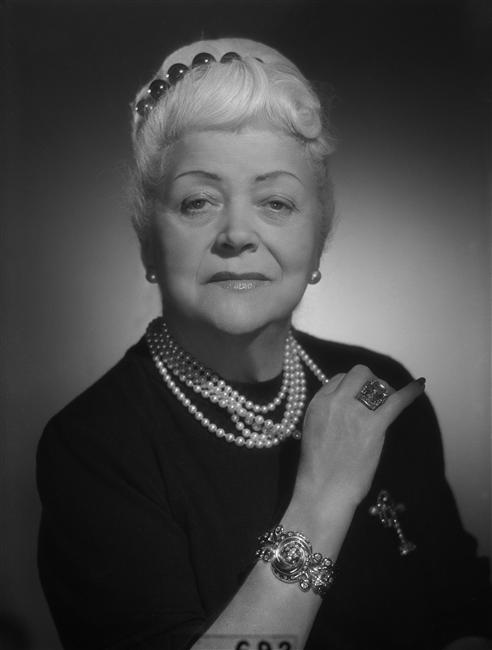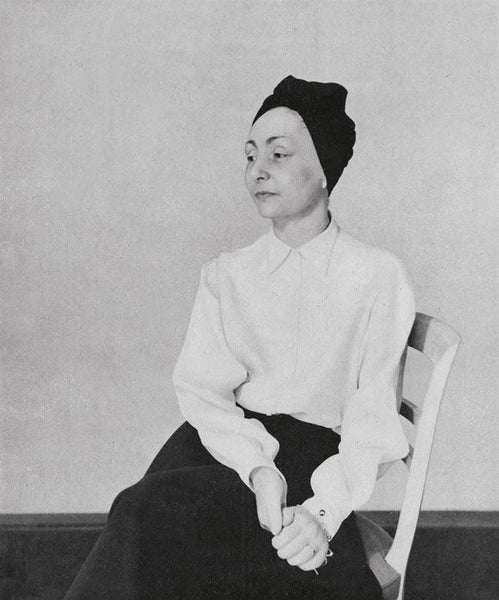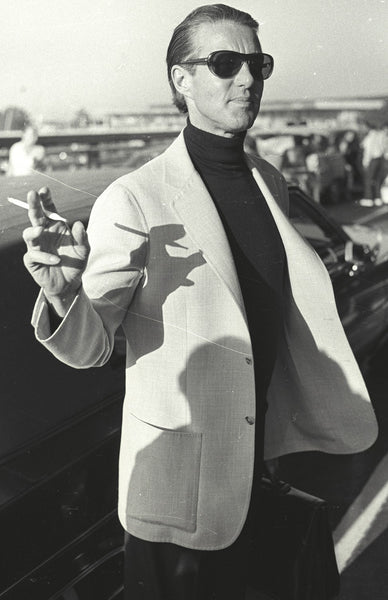Designer Spotlight: Nina Ricci

Nina Ricci was born "Maria Adélaide Nielli" in Turin, Italy, in 1883. She later migrated to France with her family when she was 12. At the age of 13 Ricci began apprenticing at a dressmakers. She married jeweler Luigi Ricci in 1904 and gave birth to their son Robert in 1906. In 1908 Ricci joined Raffin, and worked there for two decades, eventually becoming a partner in the design house. While working at Raffin, Ricci managed her own workshop, seamstresses, and clientele. She would sometimes sell her patterns to dressmakers and seamstresses, or sell her items directly to clients.

In 1931 Monsieur Raffin passed away, closing his house and leaving his partners with a considerable payoff. At the age of 49 Ricci ventured out and created her own company. She focused on designing while her son Robert, who had turned 27, managed the business side. Ricci was soon noticed for her polished, flowy, feminine designs made of luxurious fabrics; and her single room atelier quickly expanded into three eleven-floor buildings.

After World War II Ricci and her son were critical in the redevelopment of French fashion and couture. Robert Ricci, along with Lucien Lelong, arranged an exhibit at the Louvre of 150 miniature dresses from forty couturiers, including Madame Gres and Balenciaga. The exhibit, titled "Théâtre de la Mode" was popular enough to launch a European and American tour.

Ricci’s label expanded into accessories and leather craft items as well as perfumes primarily designed by Robert. Her first perfume, “Coeur-Joie,” a feminine floral scent in a heart shaped bottle designed by Marc Lalique, came out in 1946. Two years later the iconic “L’air du Temps”, with its frosted crystal dove stopper, was released to the public. The perfume was created with hope in mind, the two pecking doves symbolizing the promise of a new future after the cruelty of the war. L’air du Temps was welcomed to the perfumery cannon, joining other legendary prestige perfumes Such as Chanel No. 5, Shalimar, Arpege, and Joy.

In 1954 Ricci retired from designing, directing the house instead. She appointed Jules Francois Crahay as her successor following the raucous success of his 1959 “Crocus” Collection.
Ricci dressed French songstresses and starlets, but she also wanted to make fashion accessible, and provided two collections a year that required only two fittings. Ricci was prolific, her label dressed more clients than any other company in Paris. She was known for her high degree of workmanship, her use of sumptuous materials, and her relatively affordable pricing.
Ricci worked intimately with each garment, pleating and pulling until she was satisfied. Although she sketched and drew patterns, she preferred to work directly on a mannequin. When she had finished perfecting her vision, she would send the prototype garment off to her seamstresses for the next step in production. Ricci was a designer who understood her clients needs and accommodated to their lifestyles without withholding style and substance.

|
|

|

|
Also in Adore MRS. Couture

Designer Spotlight: Madame Gres

Designer Spotlight: Roy Halston Frowick
Halston was thrown into the limelight when Jacqueline Kennedy wore his pillbox hat to John F. Kennedy’s inauguration. Soon Halston expanded into women’s wear, creating both couture and ready-to-wear fashion catering to the fashionable and elite jet set. Halston also accepted the honor of designing the 1976 US Olympic team uniforms, redesigned Braniff Airlines’ uniforms in 1977, and created uniforms for the New York Police Department and the Girl Scouts in 1978.
Halston was innovative, using slinky knit material and ultrasuedes, and introducing a halter dress design that elongated a wearer’s silhouette. He pioneered the sensual and soft draped looks associated with disco and his beloved Studio 54.


